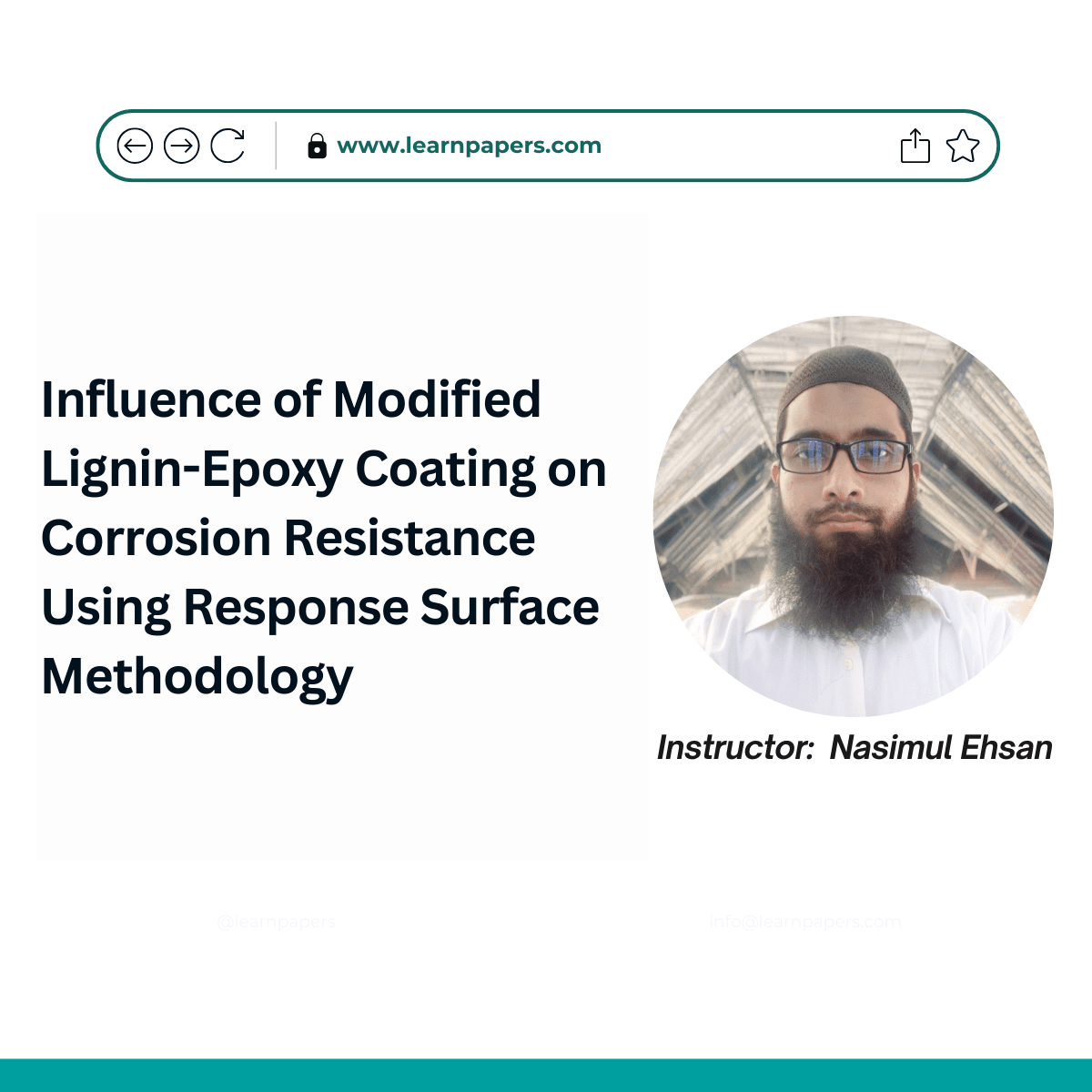Influence of Modified Lignin-Epoxy Coating on Corrosion Resistance Using Response Surface Methodology

About Course
This course explores the development and optimization of modified lignin-epoxy coatings and their impact on corrosion resistance in industrial applications. Using Response Surface Methodology (RSM) and the Box-Behnken design model, the study identifies key factors influencing coating performance and toxicity reduction. Learners will gain practical insights into coating formulation, statistical modeling, electrochemical testing, and real-world applications of corrosion-resistant materials.
Abstract
Bisphenol A epichlorohydrin (BPA-EC) as a resin, and cycloaliphatic amine (CAA) as a curing agent, are conventionally used for formulating epoxy coatings for industrial applications. However, due to its noticeable toxicity, alternative curing agents such as aminopropyl triethoxysilane (APTES) can be used instead of CAA. Moreover, BPA-EC can be partially replaced by kraft lignin. In this study, the influences of APTES, BPA-EC, and kraft lignin on corrosion resistance were analyzed using the robust statistical analytical capabilities of the existing optimization models. Response surface methodology and the Box–Behnken design model were used to investigate the respective and cumulative effect of each element. Initially, the model has a P value of 0.0037, with some of the terms not significant. Thus, a modified model has been introduced keeping only the significant terms. Finally, a P-value of 0.0004 has been achieved. Although the model showed a non-linear association for all the constituent elements, no cumulative relation has been found. However, statistics showed that BPA-EC is a necessary element for the coating to be corrosion-resistive, as corrosion resistance of the coating is proportional to the quantity of BPA-EC in the coating. Thus, the study concludes that in an attempt to decrease toxicity from the proposed APTES-cured coating matrix, BPA-EC cannot be completely replaced by lignin.
Course Content
Module 1: Introduction to Lignin-Epoxy Coatings
Module 2: Material Selection and Preparation
Module 3: Response Surface Methodology (RSM) & Box-Behnken Design Model
Module 4: Coating Fabrication & Experimental Setup
Module 5: Electrochemical Impedance Spectroscopy (EIS) Testing
Module 6: Statistical Data Analysis & Optimization
Module 7: Morphological Analysis Using FESEM
Module 8: Real-World Applications and Future Research
Student Ratings & Reviews

